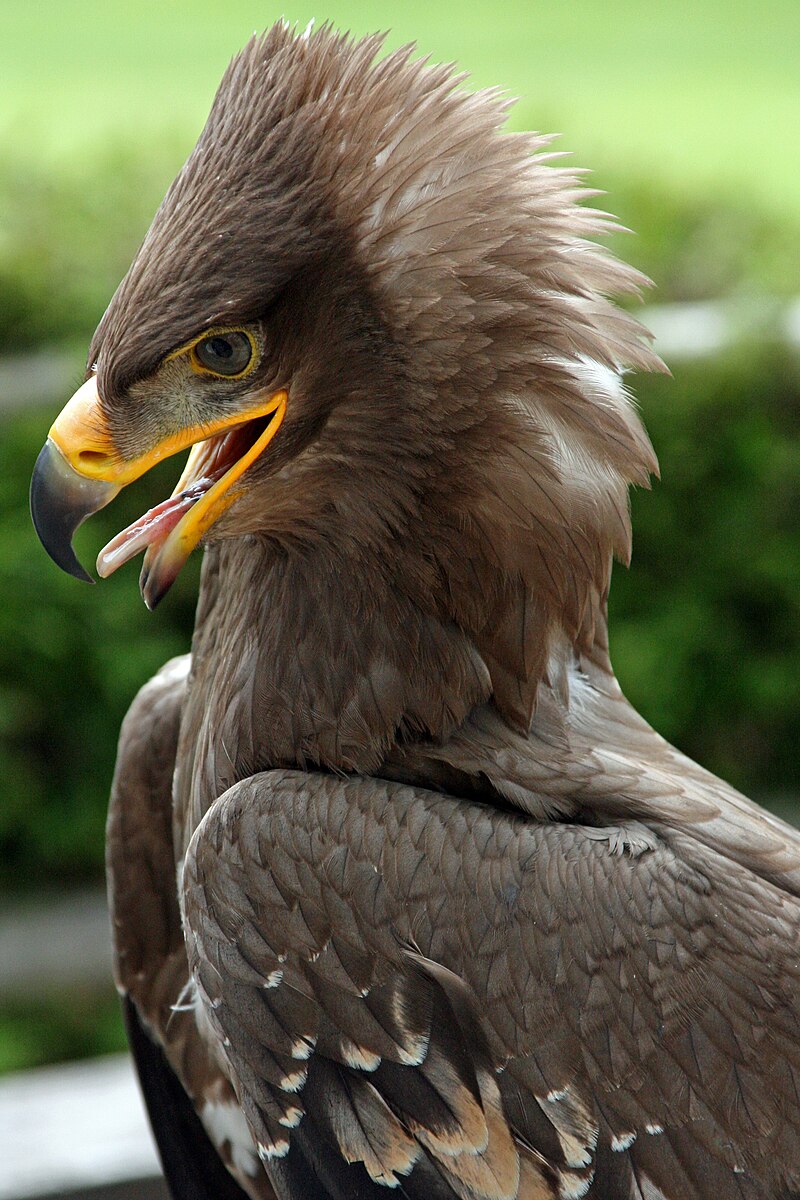The Steppe Eagle (Aquila nipalensis) is a large bird of prey known for its varied and adaptable diet. As a skilled hunter, this raptor primarily feeds on small mammals, birds, reptiles, insects, and carrion, making it a crucial part of the ecosystem. Understanding the Steppe Eagle’s dietary preferences and hunting strategies can provide valuable insights into its role in the natural world.
The Steppe Eagle’s Primary Food Sources
The Steppe Eagle’s diet is primarily composed of:
- Small Mammals: The ground squirrel is the Steppe Eagle’s primary prey, but it also hunts other small mammals such as hares, voles, and mice.
- Birds: The Steppe Eagle will prey on birds up to the size of partridges, including various species of waterfowl, gamebirds, and songbirds.
- Reptiles: Snakes, lizards, and other small reptiles are also part of the Steppe Eagle’s diet.
- Insects: The Steppe Eagle will supplement its diet with insects, particularly during the summer months when they are more abundant.
- Carrion: The Steppe Eagle is an opportunistic scavenger and will feed on the carcasses of dead animals, including livestock.
Seasonal Variations in the Steppe Eagle’s Diet
 Image source: Steppe Eagle by Fimb
Image source: Steppe Eagle by Fimb
The Steppe Eagle’s diet varies throughout the year, adapting to the availability of different food sources:
Summer Diet
During the summer months, the Steppe Eagle’s diet is primarily focused on ground squirrels, which are abundant in their natural habitat. These small mammals make up the bulk of the Steppe Eagle’s prey during this time of year.
Winter Diet
As the weather turns colder and the availability of small mammals decreases, the Steppe Eagle’s diet shifts to include more carrion and larger prey, such as hares and small birds. They will also scavenge more frequently, taking advantage of livestock carcasses and other sources of easy food.
Hunting Strategies of the Steppe Eagle
The Steppe Eagle is a skilled and adaptable hunter, employing a variety of techniques to capture its prey:
- Soaring and Scanning: The Steppe Eagle will soar high above the ground, using its keen eyesight to scan the landscape for potential prey.
- Perch Hunting: The Steppe Eagle will also wait patiently on high perches, such as trees or cliffs, watching for movement below and then swooping down to attack.
- Low-Level Hunting: When hunting small mammals, the Steppe Eagle will fly low over the ground, using its speed and agility to surprise and capture its prey.
- Kleptoparasitism: The Steppe Eagle will sometimes steal food from other raptors, taking advantage of their hard-earned catches.
Dietary Adaptations and Feeding Behavior
The Steppe Eagle has several physical and behavioral adaptations that allow it to thrive on its diverse diet:
- Powerful Talons: The Steppe Eagle’s sharp, curved talons are essential for grasping and tearing its prey.
- Strong Beak: The Steppe Eagle’s hooked beak is well-suited for ripping and tearing meat.
- Excellent Eyesight: The Steppe Eagle’s keen eyesight allows it to spot prey from great distances, even when soaring high above the ground.
- Crop Storage: Steppe Eagles can store up to 2 pounds of food in their crops, allowing them to feed frequently and efficiently.
The Steppe Eagle’s Role in the Ecosystem
As a top predator, the Steppe Eagle plays a crucial role in the ecosystem. By preying on small mammals, birds, and reptiles, the Steppe Eagle helps to maintain a balance in the populations of these species. Additionally, its scavenging behavior helps to remove carrion from the environment, preventing the spread of disease.
Conclusion
The Steppe Eagle’s diverse diet is a testament to its adaptability and resilience as a species. By understanding the Steppe Eagle’s feeding habits and hunting strategies, we can gain valuable insights into its role in the natural world and the importance of preserving its habitat. As we continue to study and appreciate this majestic raptor, we can work towards ensuring its long-term survival and the health of the ecosystems it inhabits.

